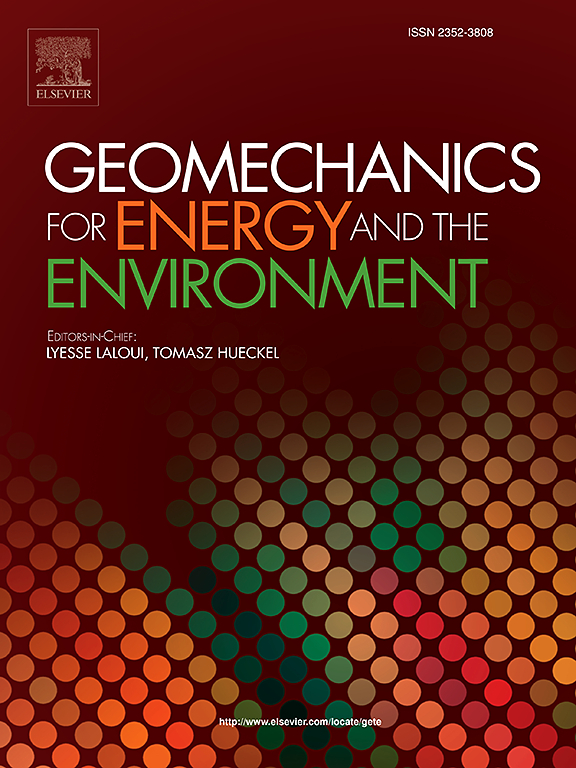能源桩的热致拉箍应力:对设计和操作的影响
IF 3.3
2区 工程技术
Q3 ENERGY & FUELS
引用次数: 0
摘要
能源桩,也被称为热活性桩,有双重目的:提供结构稳定性和收集浅层地热能。因此,它们的设计必须同时考虑结构和热负荷。然而,目前的做法通常只考虑热负荷的轴向分量。本研究旨在研究三维热载荷,特别关注透明混凝土覆盖层中的拉箍应力。通过数值模拟,本研究考察了环向应力的位置和时间变化,并阐明了潜在的机制。研究结果表明,能源桩运行过程中,透明混凝土覆盖层内会产生显著的拉箍应力,且这些应力随运行季节的变化而发生位移。因此,在能源桩设计中考虑环向应力是防止混凝土结构抗拉能力超出的重要设计问题。对不同的材料特性、几何方面和操作偏好进行了敏感性分析,以确定影响参数与环向应力之间的关系。该研究总结了基于这些发现的设计和操作建议。本文章由计算机程序翻译,如有差异,请以英文原文为准。
Thermally induced tensile hoop stresses in energy piles: Implications for design and operation
Energy piles, also known as thermoactive piles, serve a dual purpose: providing structural stability and harvesting shallow geothermal energy. As such, their design must account for both structural and thermal loads. However, current practice typically considers only the axial components of thermal loads. This study aims to investigate thermal loads in three dimensions, with a particular focus on tensile hoop stresses in the clear concrete cover. Through numerical modelling, this study examines the positional and temporal variations of hoop stresses and elucidates the underlying mechanisms. The findings demonstrate that significant tensile hoop stresses can develop within the clear concrete cover during the operation of energy piles, and that these stresses shift positions with seasonal operational changes. Therefore, it is crucial to consider hoop stresses in the design of energy piles to prevent the exceedance of concrete’s structural tensile capacity, a major design concern. A sensitivity analysis was conducted, varying material properties, geometric aspects and operational preferences to identify the relationships between influential parameters and hoop stresses. The study concludes with design and operational recommendations based on these findings.
求助全文
通过发布文献求助,成功后即可免费获取论文全文。
去求助
来源期刊

Geomechanics for Energy and the Environment
Earth and Planetary Sciences-Geotechnical Engineering and Engineering Geology
CiteScore
5.90
自引率
11.80%
发文量
87
期刊介绍:
The aim of the Journal is to publish research results of the highest quality and of lasting importance on the subject of geomechanics, with the focus on applications to geological energy production and storage, and the interaction of soils and rocks with the natural and engineered environment. Special attention is given to concepts and developments of new energy geotechnologies that comprise intrinsic mechanisms protecting the environment against a potential engineering induced damage, hence warranting sustainable usage of energy resources.
The scope of the journal is broad, including fundamental concepts in geomechanics and mechanics of porous media, the experiments and analysis of novel phenomena and applications. Of special interest are issues resulting from coupling of particular physics, chemistry and biology of external forcings, as well as of pore fluid/gas and minerals to the solid mechanics of the medium skeleton and pore fluid mechanics. The multi-scale and inter-scale interactions between the phenomena and the behavior representations are also of particular interest. Contributions to general theoretical approach to these issues, but of potential reference to geomechanics in its context of energy and the environment are also most welcome.
 求助内容:
求助内容: 应助结果提醒方式:
应助结果提醒方式:


